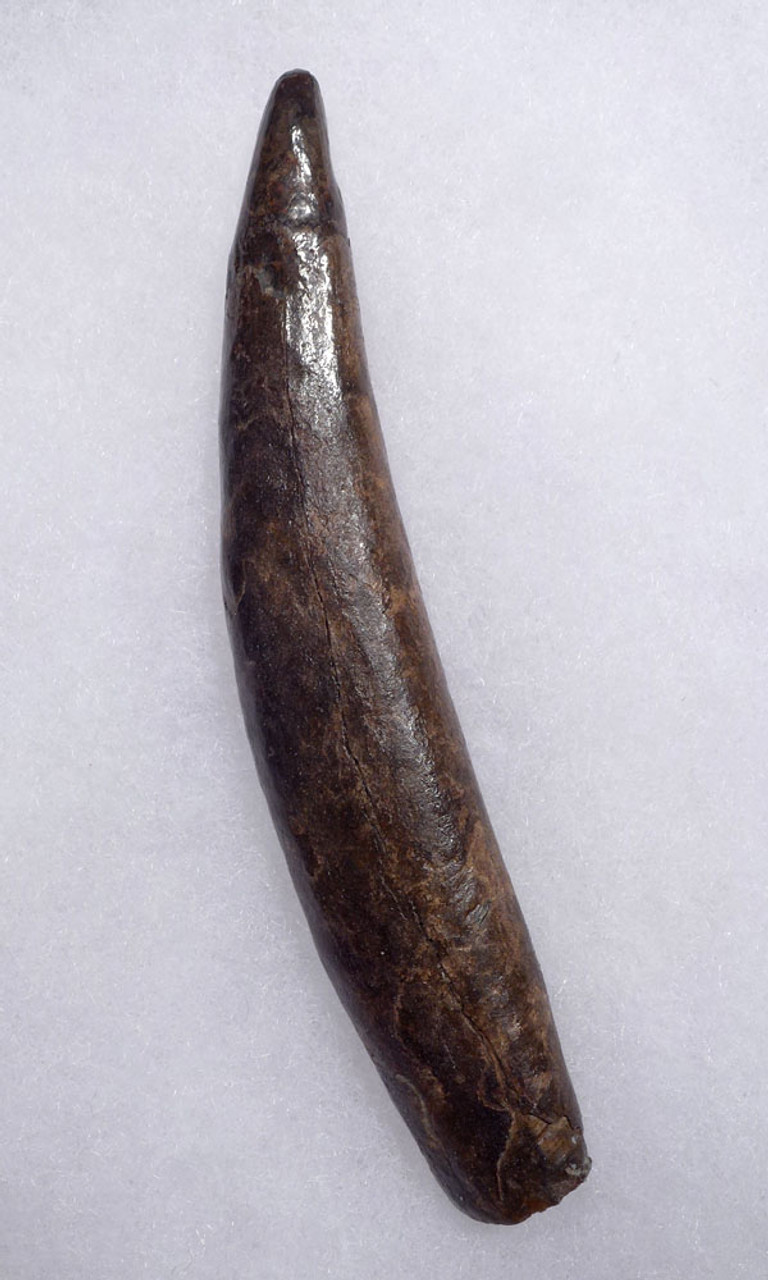Product Description
This is a complete fossil tooth from a prehistoric Pygmy (Dwarf) Sperm Whale from the Miocene / Pliocene Period. We are not acquiring any new specimens so now is the chance to pick up a rare and incredible fossil tooth of this prehistoric whale. Science readily admits it is difficult to accurately attribute isolated teeth such as these to a specific species but the anatomy and type of tooth attribute this tooth to the Kogia species of toothed whales. A specimen such as this is perfect to display alongside a shark tooth collection as this whale would have shared the same waters and time period as many of the dangerous sharks found off the East Coast of North America during the Miocene / Pliocene Period, including the infamous MEGALODON shark. Megalodon sharks would have been the primary predators of these whales and often, fossils from whales like this, are found amongst fossil Megalodon teeth indicating a Megalodon "kill / feeding site".
Rarely are these type fossil teeth found available for sale but when they are, they are almost always horribly worn or partial specimens. This is a superb example! It is in better preservation than usually seen with a complete root and sharp, unbroken tip. Tooth is unbroken and full root is present including the hollow delicate base as seen above. Rare and unusual.
HISTORY
The pygmy sperm whale is not much larger than many dolphins. They are about 1.2 m (3 ft 11 in) at birth, growing to about 3.5 m (11 ft) at maturity. Adults weigh about 400 kg (880 lb). The underside is a creamy, occasionally pinkish color and the back and sides are a bluish grey; however, considerable intermixing occurs between the two colors. The shark-like head is large in comparison to body size, given an almost swollen appearance when viewed from the side. A whitish marking, often described as a "false gill", is seen behind each eye.
The pygmy sperm has between 20 and 32 teeth, all of which are set into the rostral part of the lower jaw. Unusually, adults lack enamel due to a mutation in the enamelysin gene, although enamel is present in very young individuals. The lower jaw is very small and slung low. The blowhole is displaced slightly to the left when viewed from above facing forward. The dorsal fin is very small and hooked; its size is considerably smaller than that of the dwarf sperm whale and may be used for diagnostic purposes.
Like its giant relative, the sperm whale, the pygmy sperm whale has a spermaceti organ in its forehead. It also has a sac in its intestines that contains a dark red fluid. The whale may expel this fluid when frightened, perhaps to confuse and disorient predators.
CLICK HERE TO LEARN MORE ABOUT PREHISTORIC WHALES AND WHALE FOSSILS
 US DOLLAR
US DOLLAR
 EURO
EURO
 AUSTRALIAN DOLLAR
AUSTRALIAN DOLLAR
 CANADIAN DOLLAR
CANADIAN DOLLAR
 POUND STERLING
POUND STERLING














